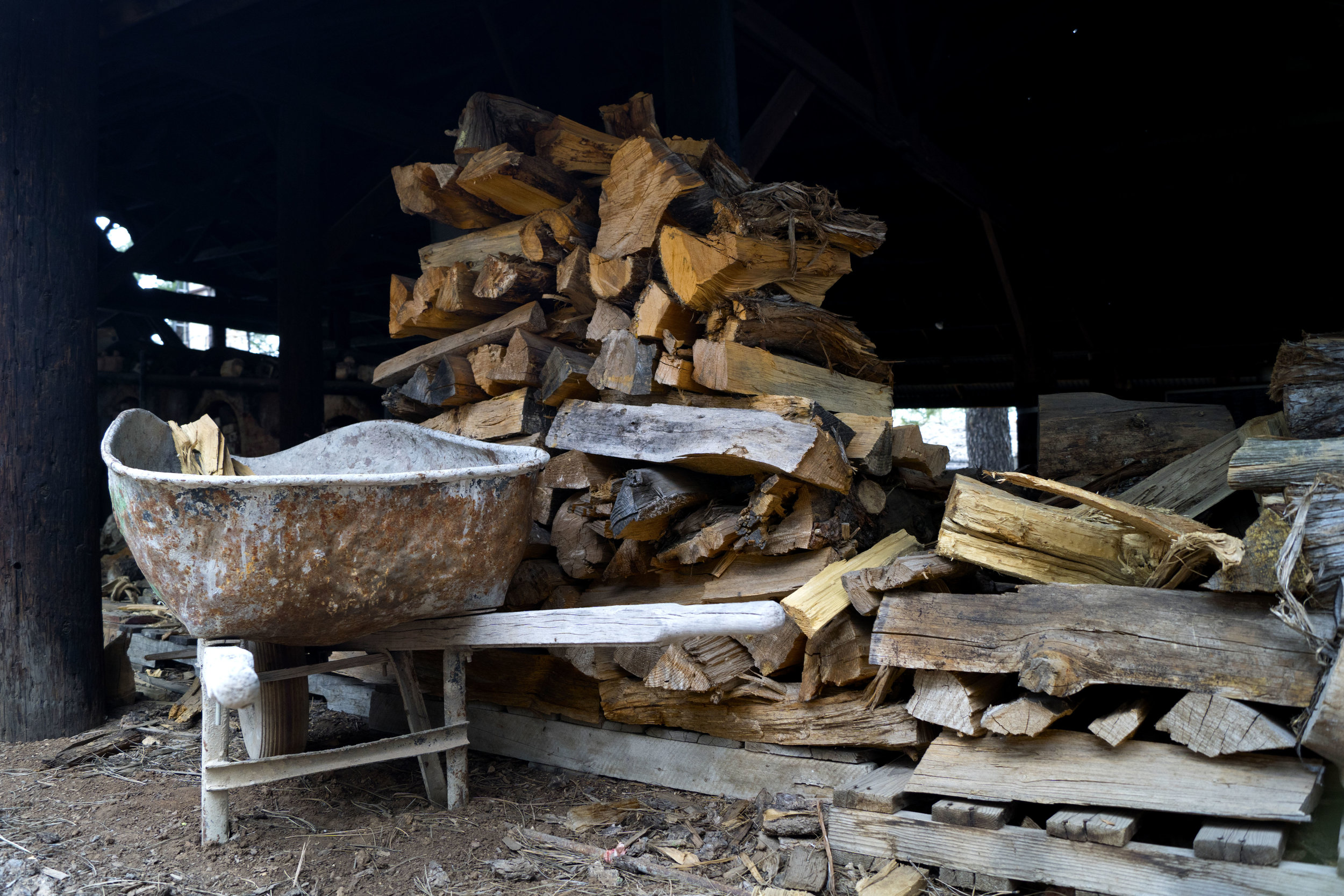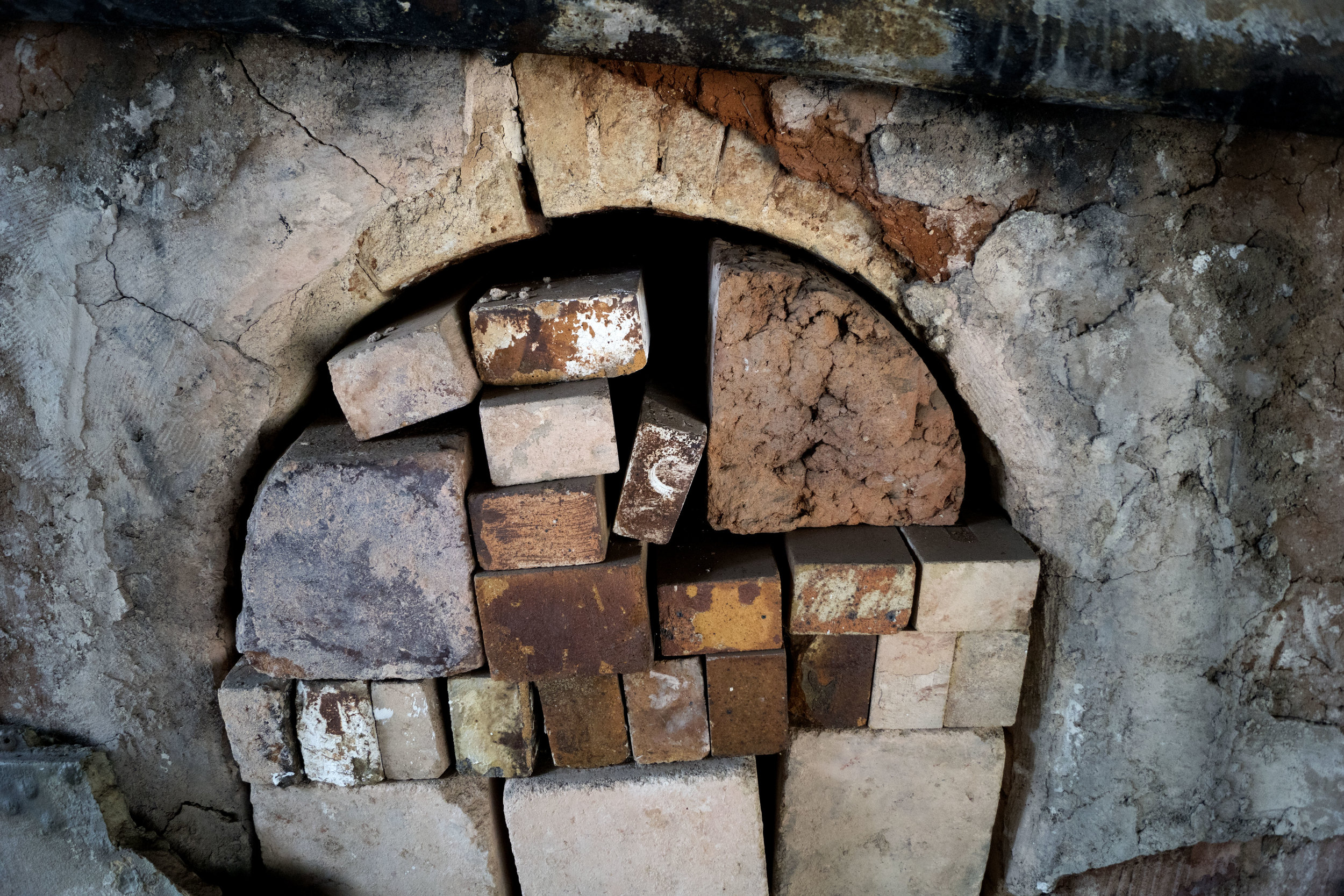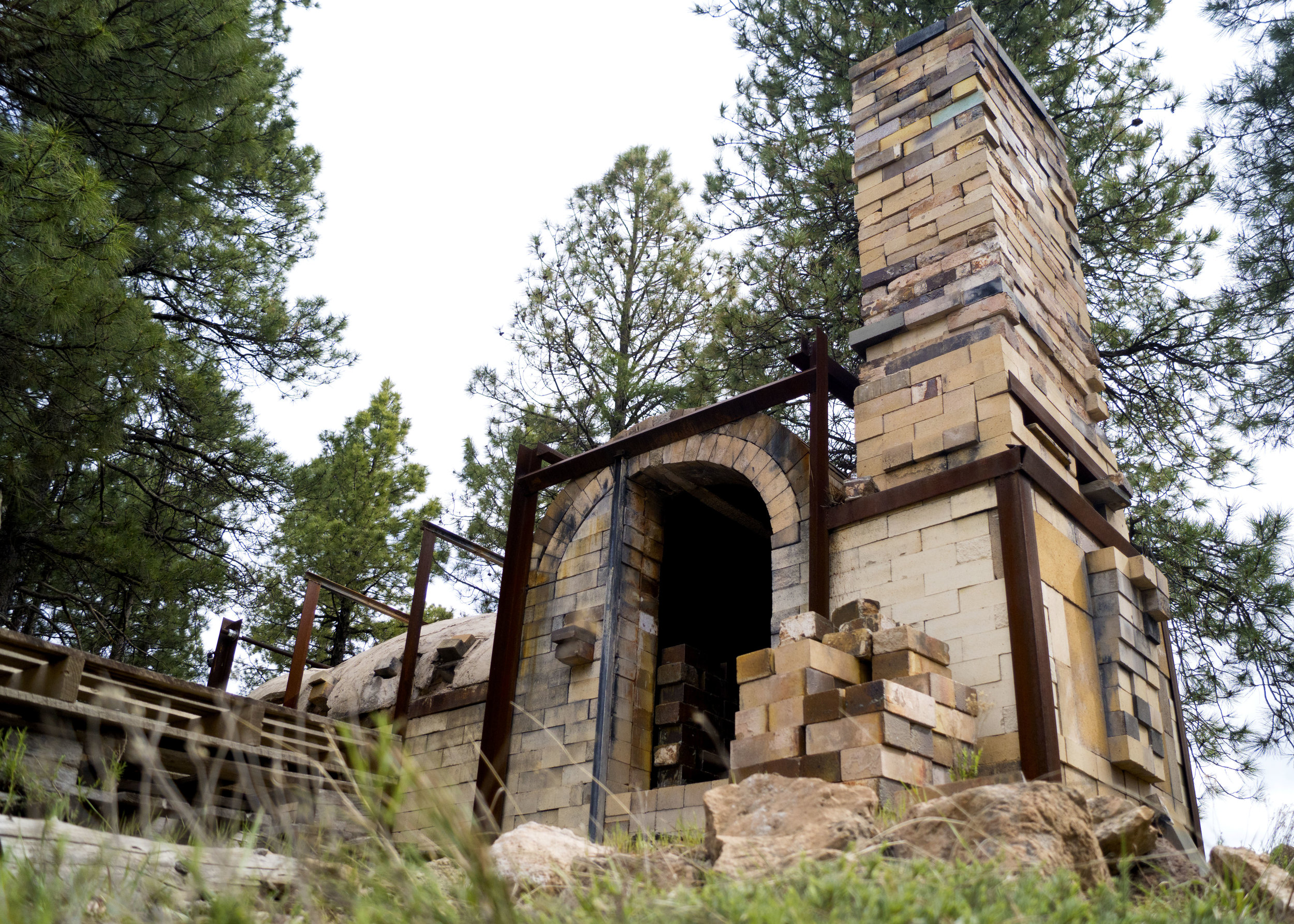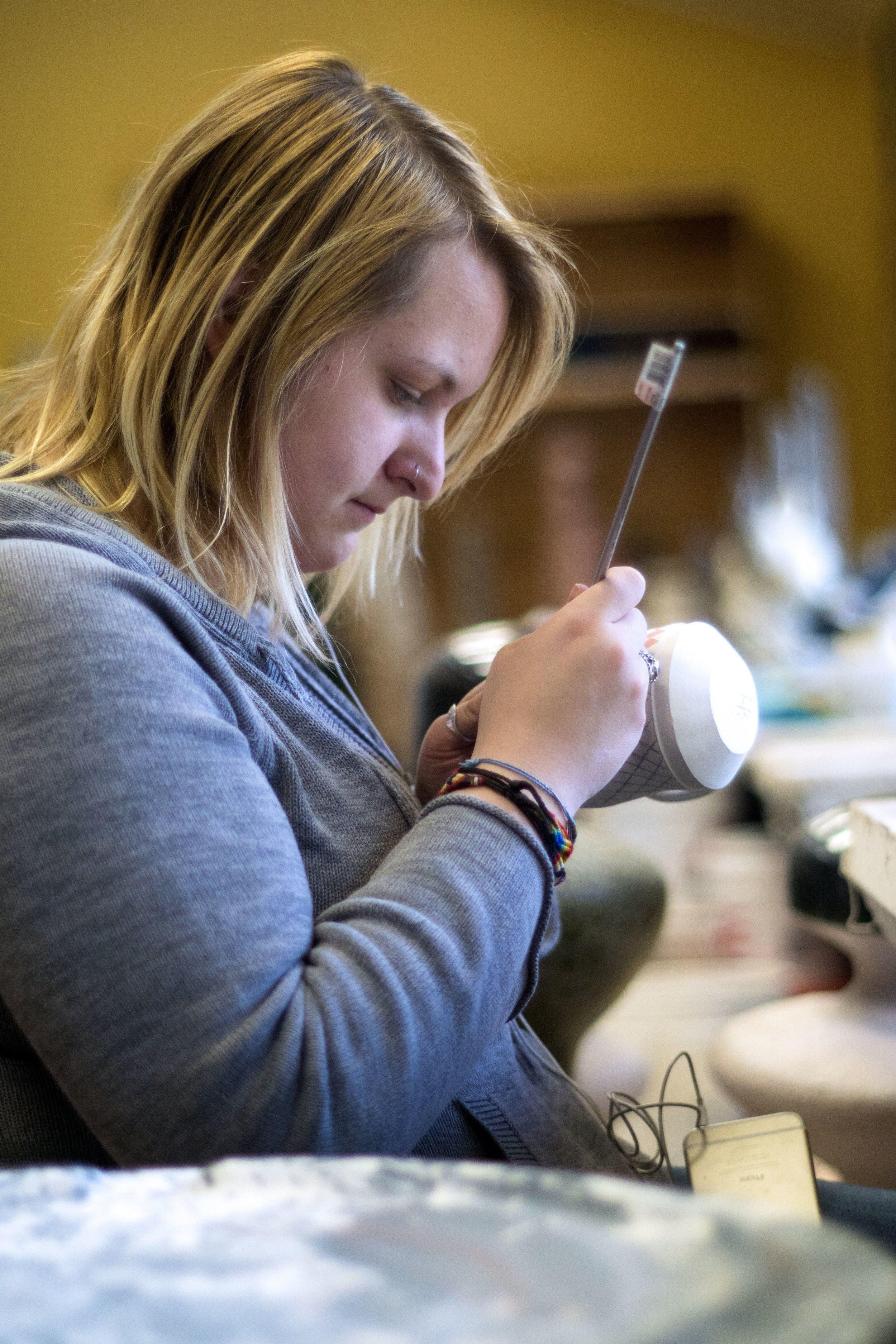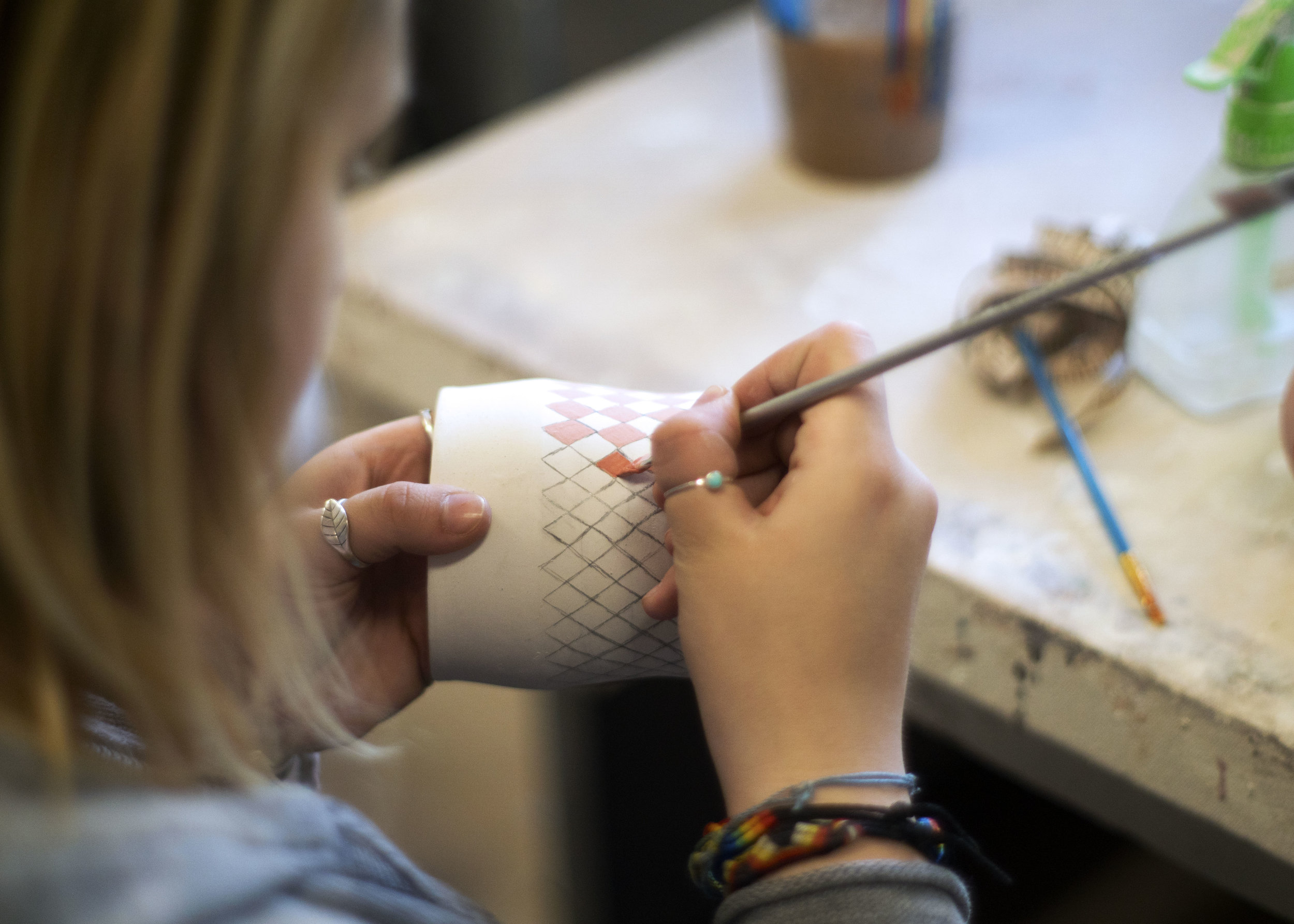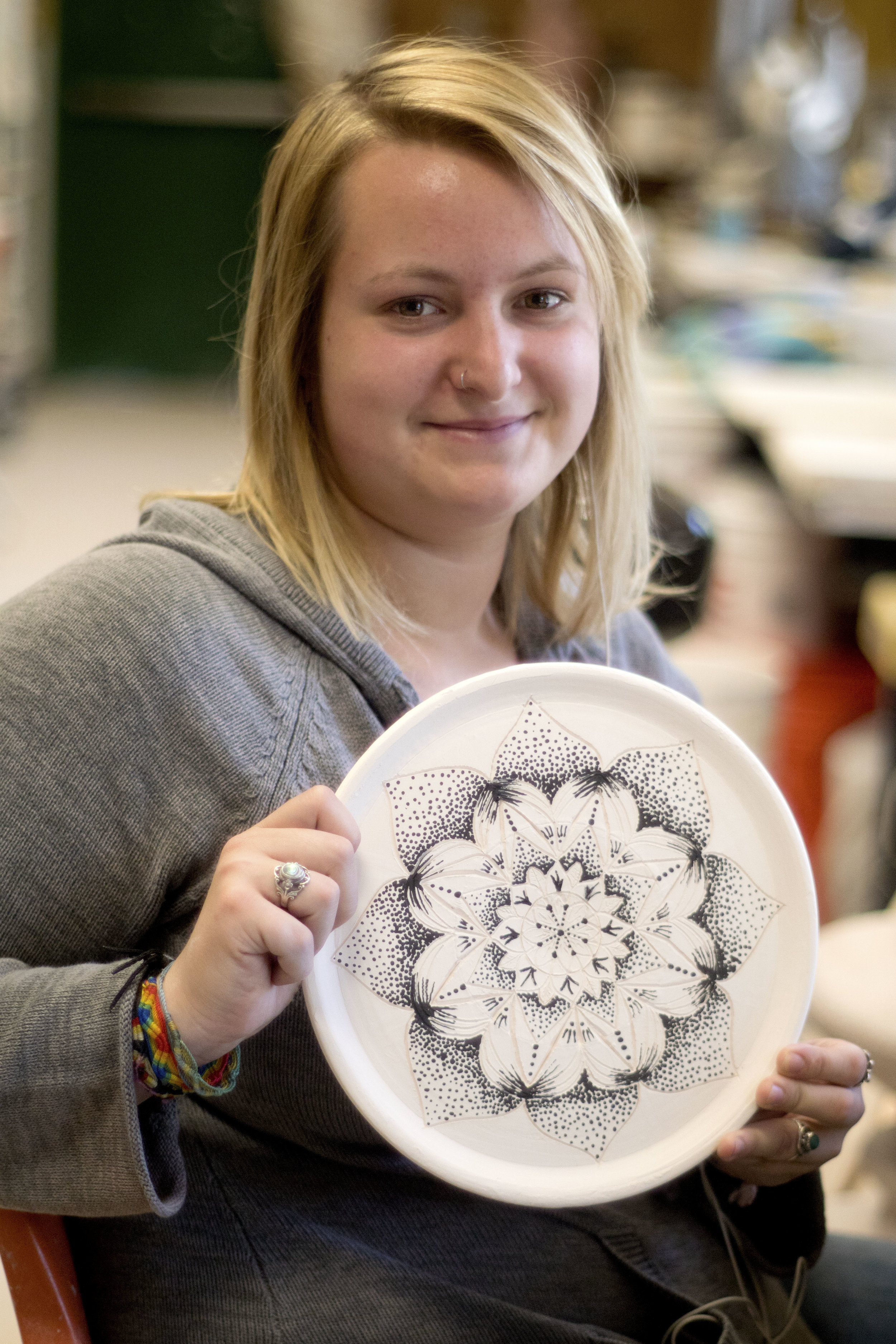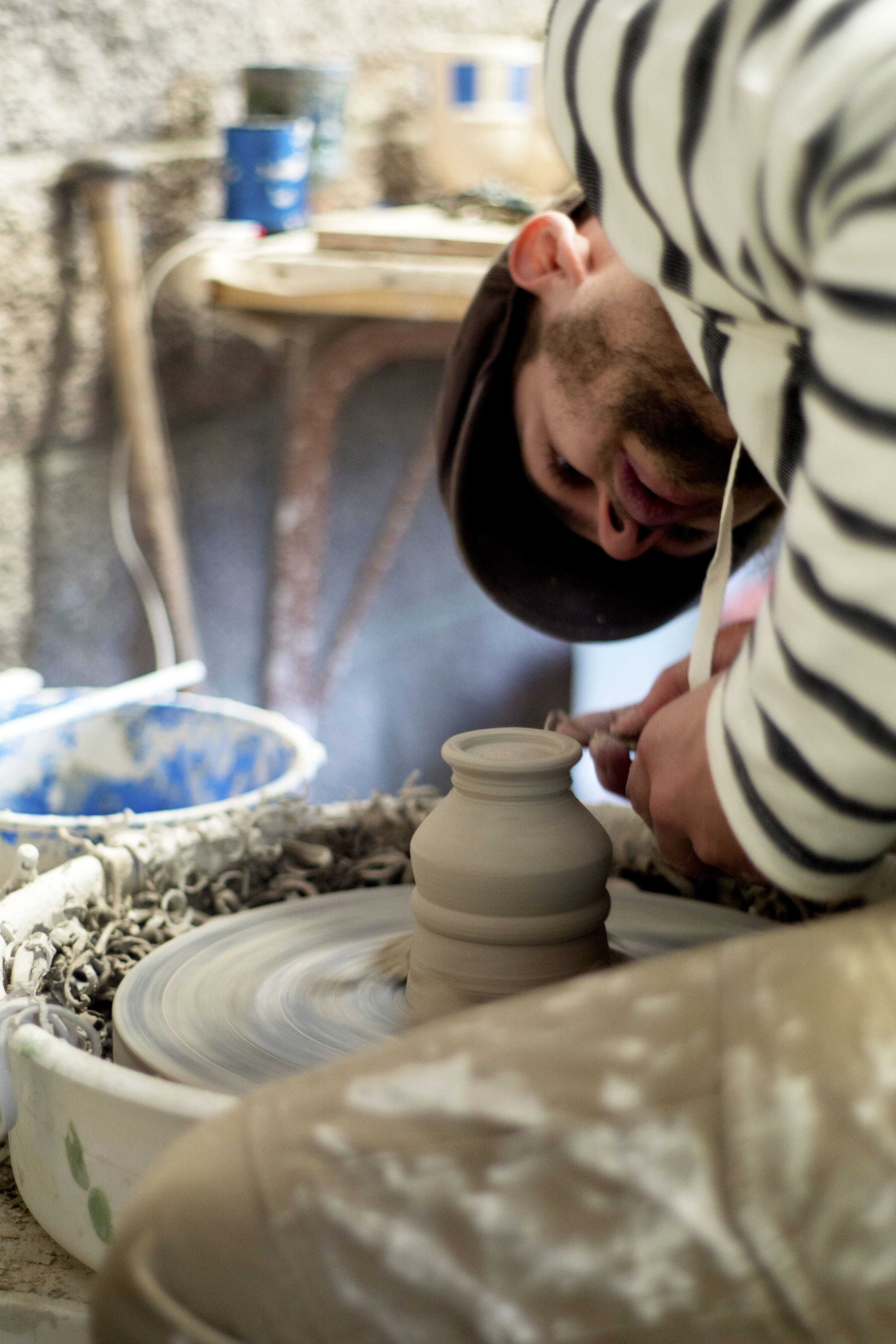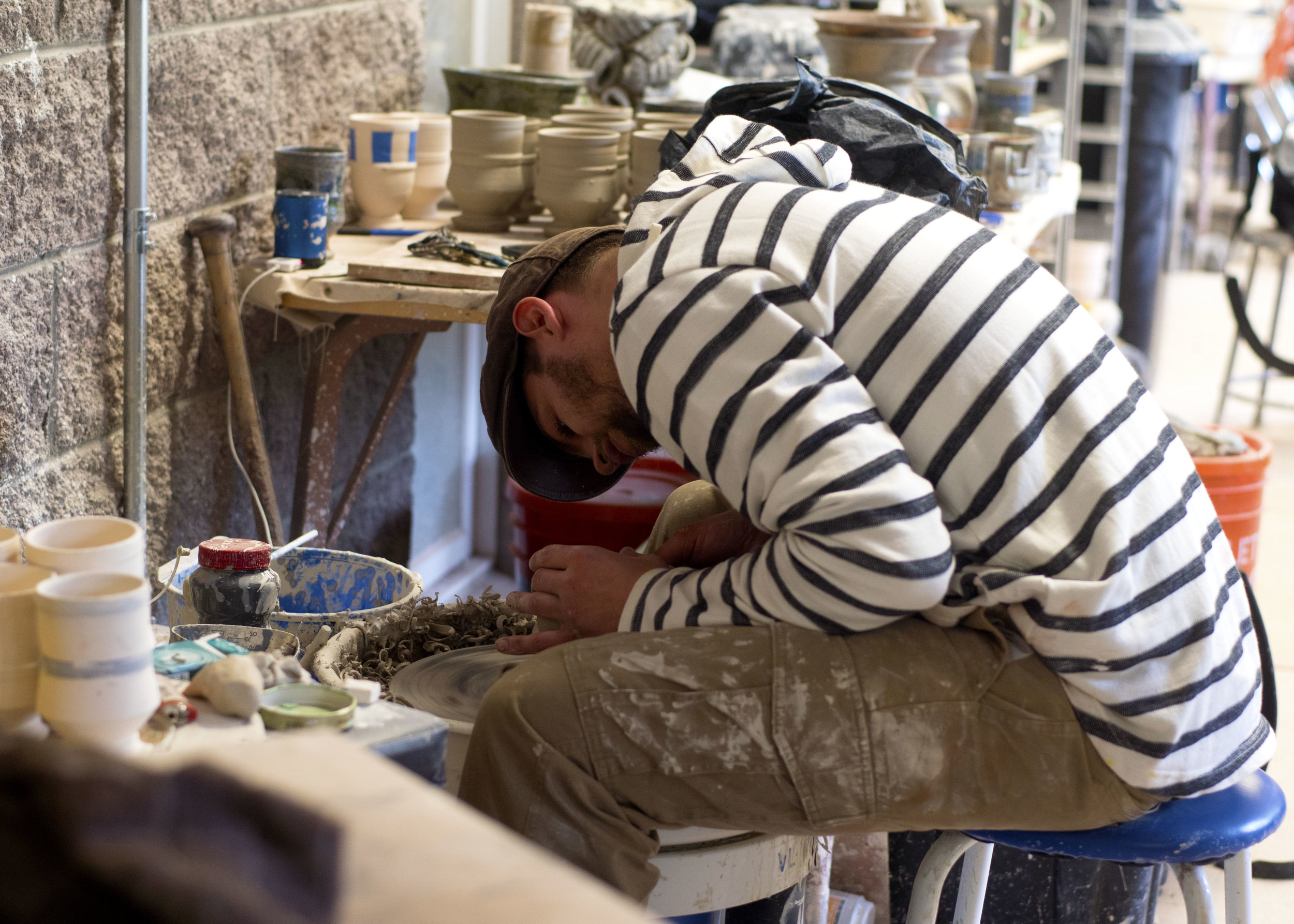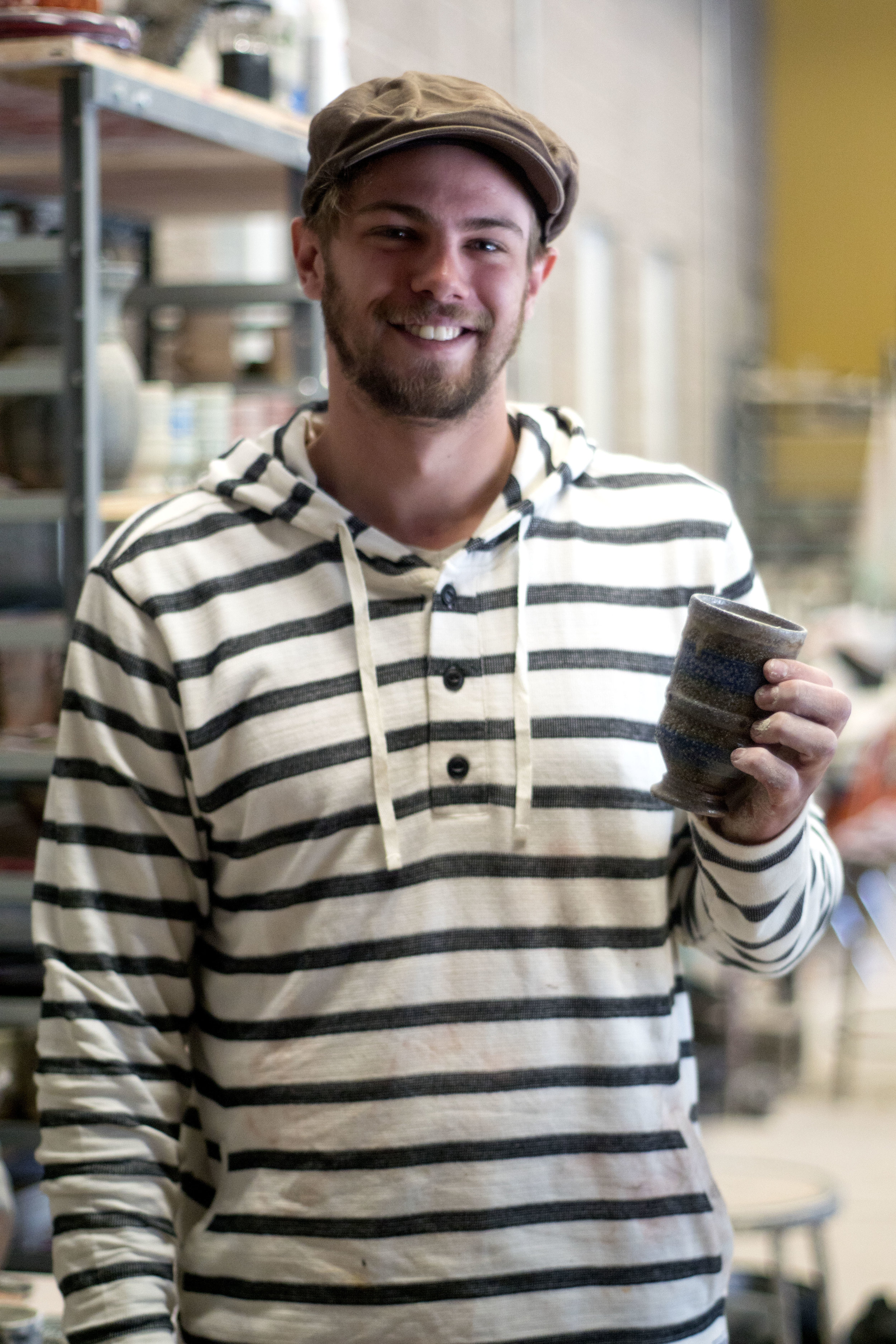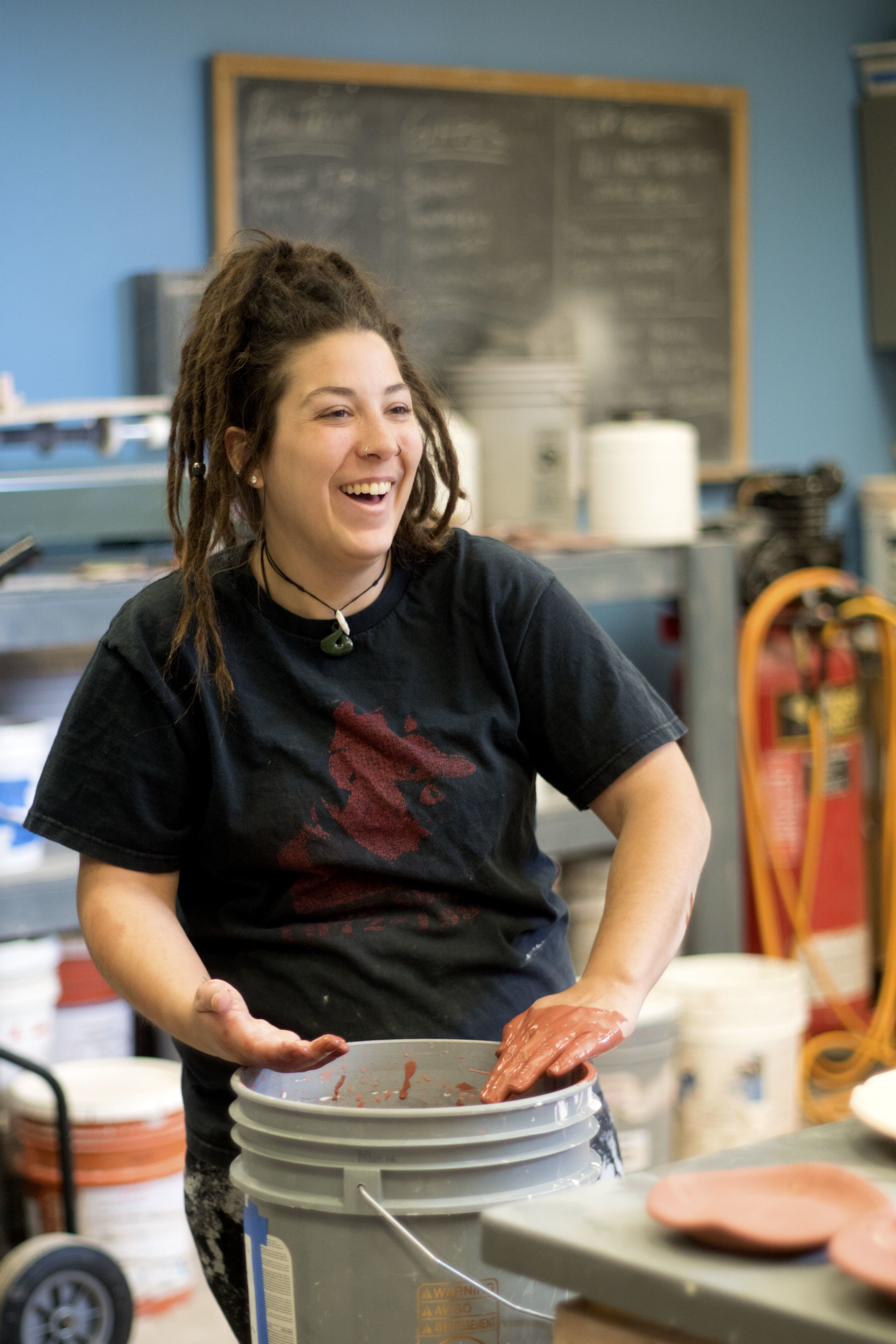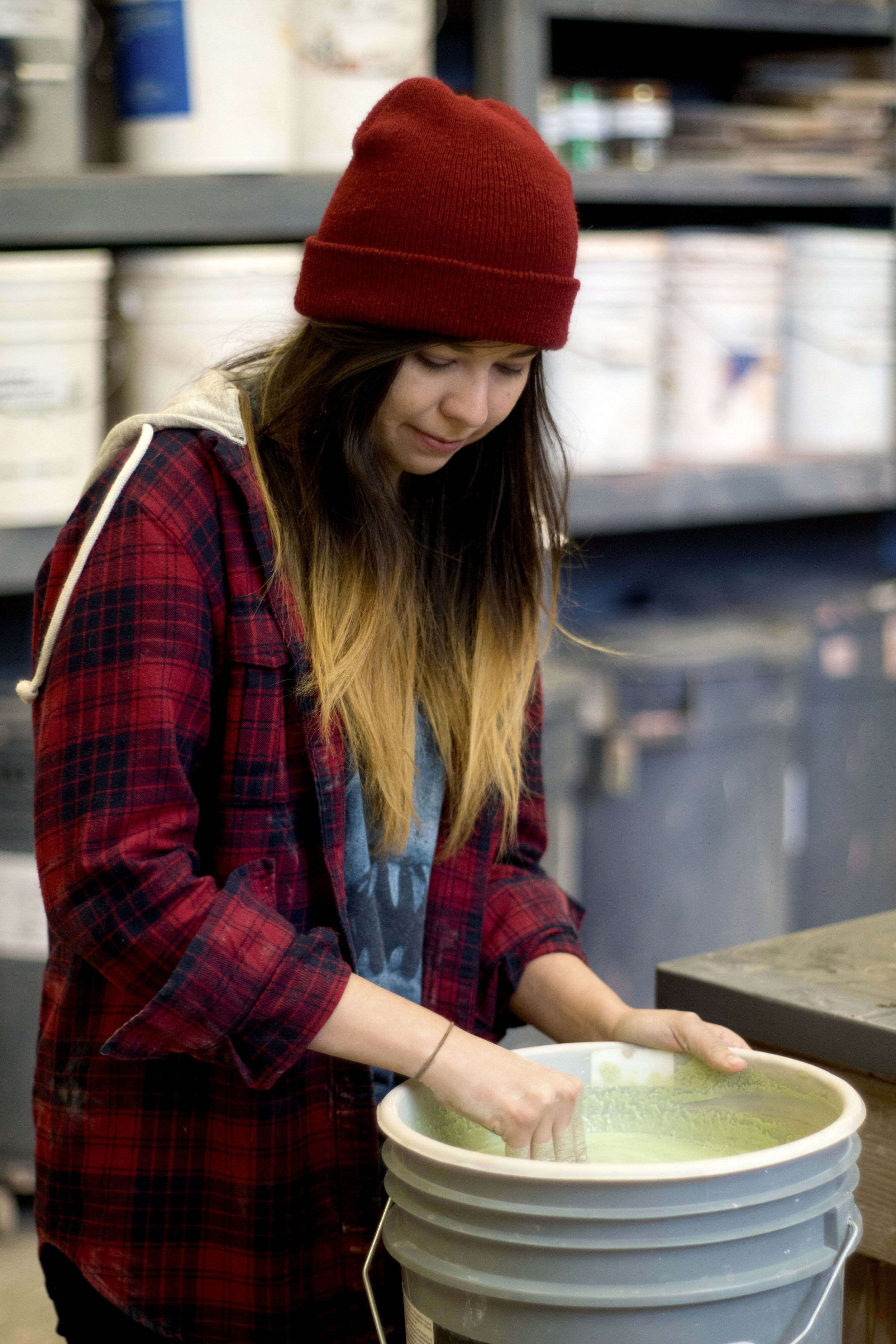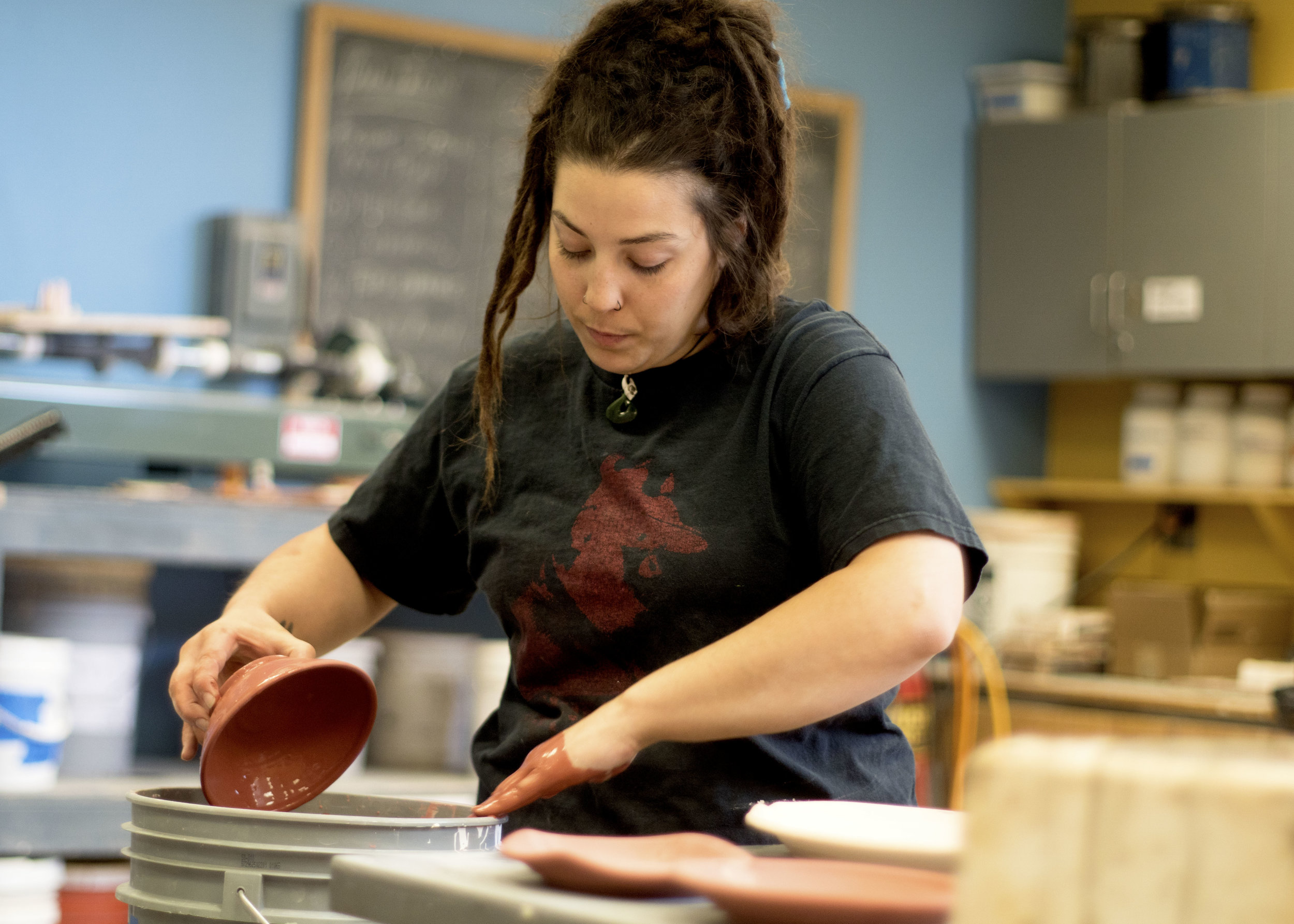FLAGSTAFF, Ariz. — May 1 2017 — Northern Arizona University has a state of the art Ceramics Complex that is one of the largest wood fired kiln facilities in the country. It is home to seven kilns, one of which is a Tozan kiln, which only exists in two other places in the world according to the NAU ceramics webpage.
The Ceramics Complex is located on South Campus, past the Lawrence J. Walkup Skydome.
Many students do not know how great the Ceramics Complex is on campus, or that the school even has such a facility said Ceramics major Holly Roccaforte.
“We have really good facilities…we have the most atmospheric kilns in one spot so you do get a lot of different chances to finish your work differently than if you were somewhere else,” said Roccaforte.
(Left) Wood from NAU’s own centennial Forest is piled up all around the kilns to be used for firings. (Right)The side of the Noborigama kiln shows one of the five chambers. The whole kiln has over 500 cubic feet of stacking space.
Atmospheric kiln firings has to do with the type of air going into the kiln. They are usually wood powered and outdoors which tends to give the pieces a more interesting result, explained Roccaforte. You never really know what you’re going to get and it comes out a lot earthier and unique as opposed to gas kilns.
(Left) The Double Wide Train kiln is one of the seven atmospheric kilns on campus. (Right) A look inside a kiln shows a dark, brick lined space for firings.
NAU has seven wood fire kilns at the Ceramics Complex. One of which is quite rare and can only be found in two other places in the world. The Tozan kiln is 24 feet long and has about 400 cubic feet of stacking space within it, according to the NAU Ceramics webpage. A typical firing for a kiln like this is anywhere from three to five days.
The Tozan Anagama kiln is 24 feet long with six side stoke holes. This kiln takes approximately three to five days to fire.
Ceramic pieces are scattered all around the complex.
“Somebody has to constantly be putting wood in [the kiln] the entire time so it can take up to 30 people to take shifts and then put wood in it overnight. Even if it’s snowing you have to be there at like 4 a.m. making sure it is climbing in temperature,” said Roccaforte.
(Left and Center) Molly Roccaforte works on her project by painting on an underglaze. (Right) Roccaforte poses with her favorite plate she has made.
Sculptures are on display all throughout the studio within the Ceramics Complex.
Learning how to use atmospheric kilns is one of the many things students at NAU have the opportunity to do at the Ceramics Complex.
Through various classes in the Ceramics progression plan, students can learn how to throw on the wheel, hand build projects, operate a kiln and create their own glazes.
Matthew Carpenter and Molly Rocaforte work on their projects during their free time.
Students like Matthew Carpenter, a junior Ceramics major, will have to opportunity to create a series of pieces that they didn’t just make. Part of the requirements for Carpenter was to formulate and create an underglaze and glaze that is completely unique to his work.
Matthew Carpenter trims one of his cups.
“I’ve gone back and re-tried it like four or five times, re-fired it, re-formulated it, mixed it up a million times to get the perfect result,” said Carpenter. The process is very time consuming but the end result is something completely unique to the artist.
(Left) Matthew Carpenter trims one of his cups. (Right) Carpenter poses with a finished cup in his series.
Carpenter’s favorite class he has taken in the Ceramics program at NAU is called Glaze and Firing, where he learned about the chemistry of glazes. From this course students get a deeper understanding of what goes on while the pottery is being fired.
“You learn all the chemical balancing of ceramics and the reasons why things are happening in the kiln,” said Carpenter.
(Left) Sara LaRosa wipes her hands as she glazes some of her pieces. (Right) Sara Bogle mixes a glaze that she created.
Graduating senior, Sara LaRosa is currently in the same class and said it is one of her favorites for the same reasons. LaRosa said her experience as a ceramics major for the past four years has been great. Her favorite thing was the variety that the program has to offer.
(Left) Sara LaRosa dips her pieces in a glaze she created. (Right) LaRosa poses with the fired version of the same glaze.
“There’s a lot more to the clay world than just making pots. So being able to be exposed to different options and ways of working is really awesome,” said LaRosa.
Finished pottery sits in the ceramics studio waiting to be graded at the end of the semester.

